Stomach tacking
onyxdaily
17 years ago
Featured Answer
Sort by:Oldest
Comments (39)
eandhl
17 years agolast modified: 9 years agogoldgirl
17 years agolast modified: 9 years agoRelated Discussions
Mad as a wet hen!
Comments (13)So glad this worked out, it would have bugged you forever (at least if you were me). I have had an air return to stew about for a few weeks. It is right in a highly visible place which I have told the electrician and others to stay clear of because it is my "beautiful wall." I said no switches, etc here. Didn't think to mention it to the HVAC guy, and there it is. I finally asked my builder if it could be rotated 90 degrees so that it faces the mudroom vs. my "beautiful wall." I walked through yesterday and it is turned --- thank goodness. My heart did a little leap when I saw that return in the mudroom. I had no idea just how relieved I would feel until I saw it moved! Don't know why I didn't just ask sooner!...See MoreNew information learned about BLOAT...
Comments (4)Christine, This is from an old study done on bloat. Being involved with Great danes since 1963, we have had our share of bloat and have known many others who have gone through it. Bottom line is - no one really knows. It does run in some bloodlines so genetics can play a part. I have known dogs to bloat on empty stomachs, bloat on raw diets and bloat after just laying around the house. On the other hand, I have known dogs to eat dry food, drink lots of water, run around like crazy after eating and live to 10 or more. This is a horrible health issue that many breeds are affected by and each one of us with affected breeds can only do what we feel is best. So many dane, and other breeds, now tack their dogs as a normal procedure. Again, pros and cons of that. Jan...See MoreWhat constitutes a "cook's kitchen" ? (and a slight introduction)
Comments (55)Kitchens are very personal to those that use them. One cooks dream kitchen will be another cooks nightmare. Fingers crossed in two years time I will be allowed to build MY dream kitchen in our current house. Any line cook/professional chef will feel at ease here, but most people on this forum would be shocked. I am in a very unique situation where my wife has a very well paying job that means I do not have to work to put food on the table. This is not to say I could not find work, as 13 years in the Australian Army (retiring as a Major) and four years as a Finance Professional (two finance degrees, the highest a Masters) have left me with marketable skills. After moving to Dallas TX via five years in New York City, from Sydney Australia, I was looking at short courses to improve my home cooking. Not finding any courses that were of value I enrolled at Le Cordon Bleu and completed a 15 month Culinary Associates Degree in 13 months then worked in a five star restaurant for nine months. This was all to improve my home cooking. Kitchens for me are a place of work. If you want to socialize there are other rooms in the house for that. If you need to do homework, there are other rooms in the house for that. If you are in my kitchen you are cooking and/or cleaning. By their nature kitchens are hot, noisy, dangerous places. Pets and very very young children do not belong in the kitchen as they pose a risk to themselves and others, both through injury and food contamination. My kitchen will have a commercial range hood. I'm not talking 27" deep 48" wide 1,000 cfm, but a 48" deep 9' wide 2,500 cfm hood covering the entire hot cooking area. The hot cooking area will have one gas wok burner and outlets/space for two 3,500w (240v) portable induction burners, two 1,800w (110v) portable induction burners, one 240v counter top deep fryer, two immersion circulators (110v) in their water baths, and a commercial combi oven. Portable burners and the like allow flexibility in the kitchen and increase prep counter space. Most of my kitchen will be stainless steel with open shelving. It might not grace the pages of Better Homes and Garden, but it will be a bullet proof kitchen that is easy to clean. As much as possible the kitchen will be a separate room, NOT open the the main living areas. For me kitchens are food preparation areas with other rooms for food eating and socializing. A separate kitchen allows the noise, heat and smells to be contained in one room, not spread throughout the house. This kitchen will match my cooking style and methods. I hunt and have a chest freezer full of venison, rabbit and squirrel I harvested myself. The freezer also contains sub-primal cuts of animals that I buy in bulk. I much as I can I butcher and process my own meat and make sausage from scratch. I make all stocks, broths and sauces from scratch. I need large prep tables that are easy to clean to do this. While I do not consider my cooking methods cutting edge, I do own and use equipment not often seen outside professional kitchens. I cook Sous Vide for almost every meal. I use immersion circulators to cook most of my proteins and I use a vacuum chamber sealer to seal product in plastic bags. For those that have seen the five volume cookbook Modernist Cuisine, I can prepare most of those recipes with the current kitchen tools I own. My dream kitchen will allow me to cook them all. I rarely cook one pot wonders. A normal mid week meal, for just my wife and I, will be one course with a protein, sauce, two different vege and a starch. I require five separate burners to heat the food for plating - one for each item. I will/have happily spend/spent 6-8 hours a day in the kitchen for 3-4 days preparing a themed 9 course tasting meal (paired with wine) because one friend from out of town is/was coming over. I enjoy preparing, cooking, plating and serving food at home that is 5 star restaurant quality. When people ask me what do I do, I say I am a Personal Chef to my Wife. I can count on both hands the number of times per YEAR that we order take out and/or eat at a restaurant for dinner when in Dallas. A kitchen is where cooking occurs. While many people forget it, cooking is a very serious business. When you make mistakes in a kitchen, at best people go yuk and a pizza is ordered; worse case people die. To reduce the possibility of food borne illnesses, the kitchen needs to be an area that is separate from the main area of the house. It should not be a thoroughfare for the family and pets traipsing from the carport/outside/garage/etc to get to another part of the house. The materials the kitchen is made of need to be easily cleaned and sanitized. If you are scared to use a pressure washer on them, it is not the right material. My dream kitchen is most peoples nightmare. It is industrial, noisy and tight. Any aisle wider than 36" wide is too wide, any wider I would have to take a step to reach something - that is inefficient. The lighting will be bright and daylight balanced. I spend my pretty-mood-lighting-funds on the lights outside and in the great room, not the kitchen. The only view in my kitchen, other than the four walls, is the TV in one corner. The best views in the house are when you are sitting on the back deck with a cold beer in both hands, not standing at the sink washing a stack of dirty pans. A "cook's kitchen" is one where any cooking occurs. I have friends with kitchens costing $200k+ that only get used to heat precooked purchased food on Thanksgiving - I do not call this a cook's kitchen although it could be. Another friend will prepare, from scratch a 3 course plated meal for 10 in their 800 sq ft NYC studio apartment. The "kitchen" is a bar sink, 2 feet of counter space, 1 hot plate, 1 toaster oven and a dorm fridge. What constitutes a "cook's kitchen" for me is one that I am willing and happy to spend many hours a day, day after day in. For me this is commercial kitchen in a residential home....See MoreAre we being unreasonable? Feedback on subcontractor please!!
Comments (15)"We feel that paying them a full $15K to install a full floor as if we were a brand new customer is more than generous...and that we should not have to pay them for anything related to the prior efforts. We did not change our mind... we did not "cause" the mistakes ...we followed their advice every step of the way! (And we were pleasant and calm along the way!) In short --they promised something that they could not deliver. We acknowledge they did *try* in good faith to remedy the problem. But we still have no suitable floor!" You are correct. In the sink replacement business, sometimes we need matching stone and sometimes that matching stone is not available. I send customers shopping for the required stone remnant so I know it matches to their satisfaction since they picked it out. If they can't or won't we go to plan B. Years ago, I had a customer cry "It's too dark!" after I built and stained built-in seating. I showed her how the stained sample that she signed matched perfectly; nope, she wanted a do-over on my dime. I walked away, eating the cost of the work done so far. While I have no medical training whatsoever, I can diagnose crazy when I find it. Contractors who attempt to match existing materials are playing with fire; these guys got burned fair and square....See MoreGammyT
17 years agolast modified: 9 years agocynthia_gw
17 years agolast modified: 9 years agojan2
17 years agolast modified: 9 years agoanita22
17 years agolast modified: 9 years agomazer415
17 years agolast modified: 9 years agonovita
17 years agolast modified: 9 years agoMeghane
17 years agolast modified: 9 years agogoldgirl
17 years agolast modified: 9 years agocindyxeus
17 years agolast modified: 9 years agoanita22
17 years agolast modified: 9 years agoMeghane
17 years agolast modified: 9 years agocynthia_gw
17 years agolast modified: 9 years agocindyxeus
17 years agolast modified: 9 years agocindyxeus
17 years agolast modified: 9 years agocindyxeus
17 years agolast modified: 9 years agoMeghane
17 years agolast modified: 9 years agocindyxeus
17 years agolast modified: 9 years agomazer415
17 years agolast modified: 9 years agoMeghane
17 years agolast modified: 9 years agocindyxeus
17 years agolast modified: 9 years agoonyxdaily
17 years agolast modified: 9 years agocindyxeus
17 years agolast modified: 9 years agojan2
17 years agolast modified: 9 years agoraul_in_mexico
17 years agolast modified: 9 years agoonyxdaily
17 years agolast modified: 9 years agogigi7
17 years agolast modified: 9 years agogigi7
17 years agolast modified: 9 years agoelphaba_gw
17 years agolast modified: 9 years agocindyxeus
17 years agolast modified: 9 years agoMeghane
17 years agolast modified: 9 years agoraul_in_mexico
17 years agolast modified: 9 years agoMeghane
17 years agolast modified: 9 years agoonyxdaily
17 years agolast modified: 9 years agoanita22
17 years agolast modified: 9 years agoraul_in_mexico
17 years agolast modified: 9 years agoHU-366603543
5 years ago
Related Stories

DECORATING GUIDESFrom Queasy Colors to Killer Tables: Your Worst Decorating Mistakes
Houzzers spill the beans about buying blunders, painting problems and DIY disasters
Full Story
LIFEHouzz Call: Show Us Your Nutty Home Fixes
If you've masterminded a solution — silly or ingenious — to a home issue, we want to know
Full Story
HOUSEKEEPINGHow to Clean Hardwood Floors
Gleaming wood floors are a thing of beauty. Find out how to keep them that way
Full Story
REMODELING GUIDES11 Reasons to Love Wall-to-Wall Carpeting Again
Is it time to kick the hard stuff? Your feet, wallet and downstairs neighbors may be nodding
Full Story
HOUZZ TOURSDesign Lessons From a 10-Foot-Wide Row House
How to make a very narrow home open, bright and comfortable? Go vertical, focus on storage, work your materials and embrace modern design
Full Story
SMALL HOMESHouzz Tour: A Tiny House Packed With Style
A couple in Northern California opts for a customized home on wheels with clever design and storage solutions
Full Story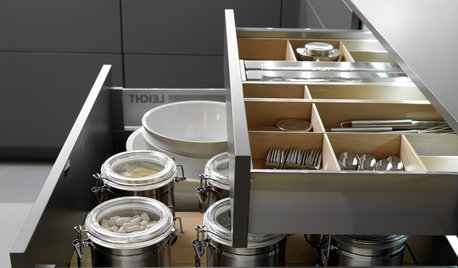
DECORATING GUIDESHow to Work With a Professional Organizer
An organizing pro can help you get your house together. Here's how to choose the right one and gain your own clutter-clearing skills
Full Story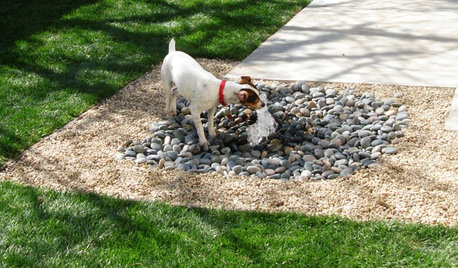
MOST POPULAR8 Backyard Ideas to Delight Your Dog
Cue the joyous soundtrack. These pet-friendly landscape and garden ideas will keep your pooch safe, happy and well exercised outdoors
Full Story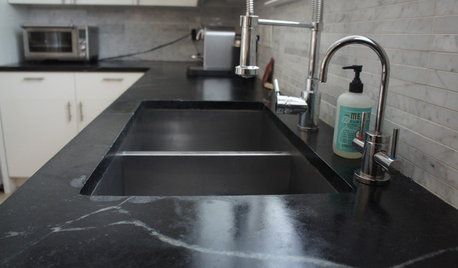
KITCHEN DESIGNSoapstone Counters: A Love Story
Love means accepting — maybe even celebrating — imperfections. See if soapstone’s assets and imperfections will work for you
Full Story
GREAT HOME PROJECTSHow to Design a Family Photo Wall
New project for a new year: Display your favorite images of loved ones for the most personal gallery wall of all
Full Story


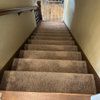

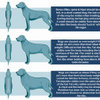
dobesrule